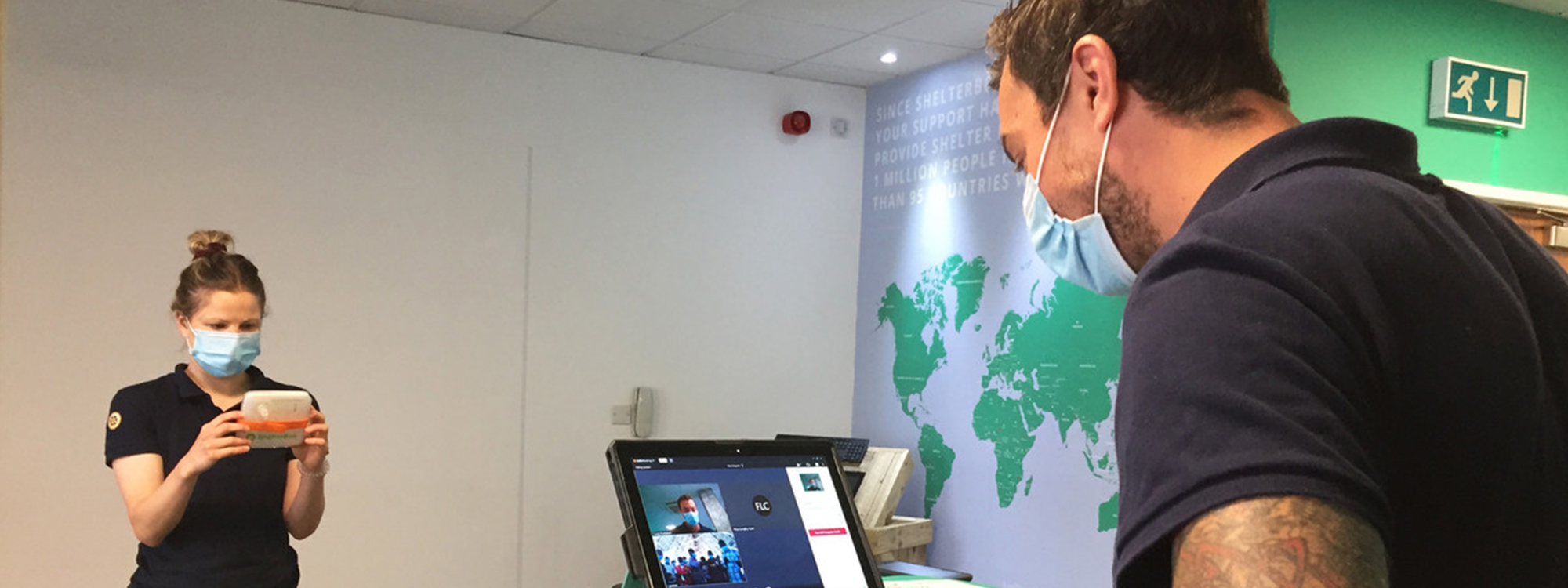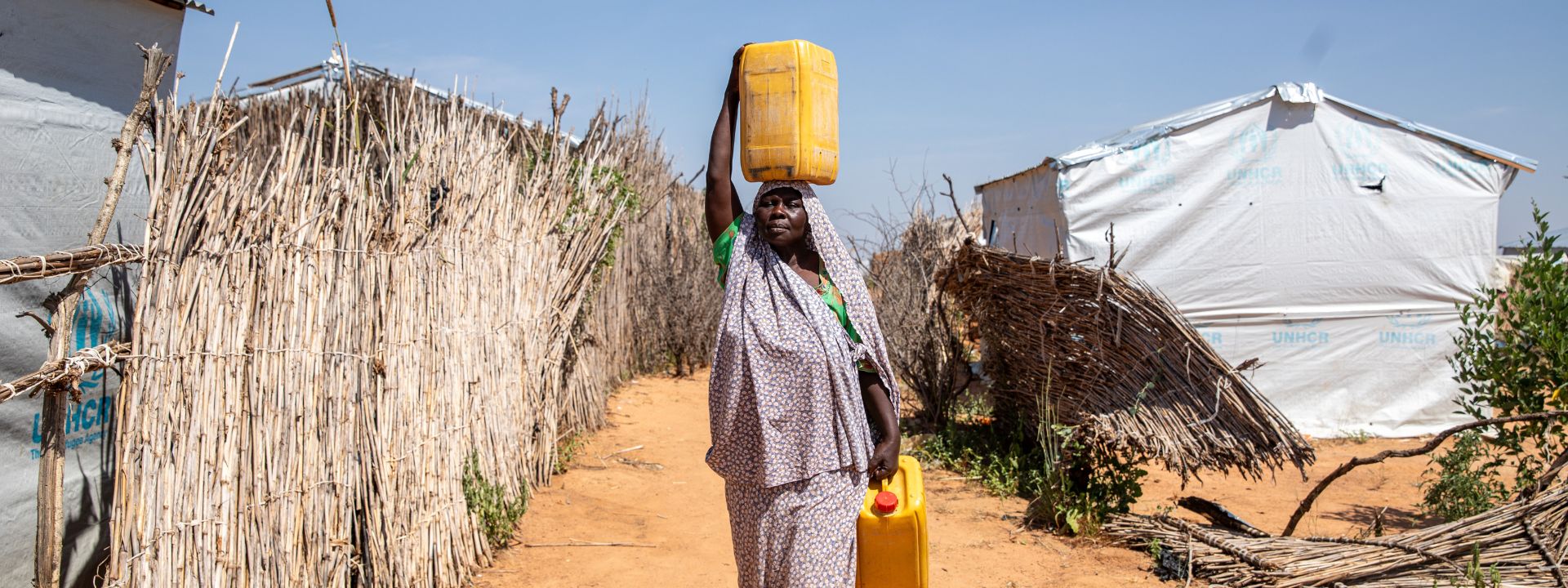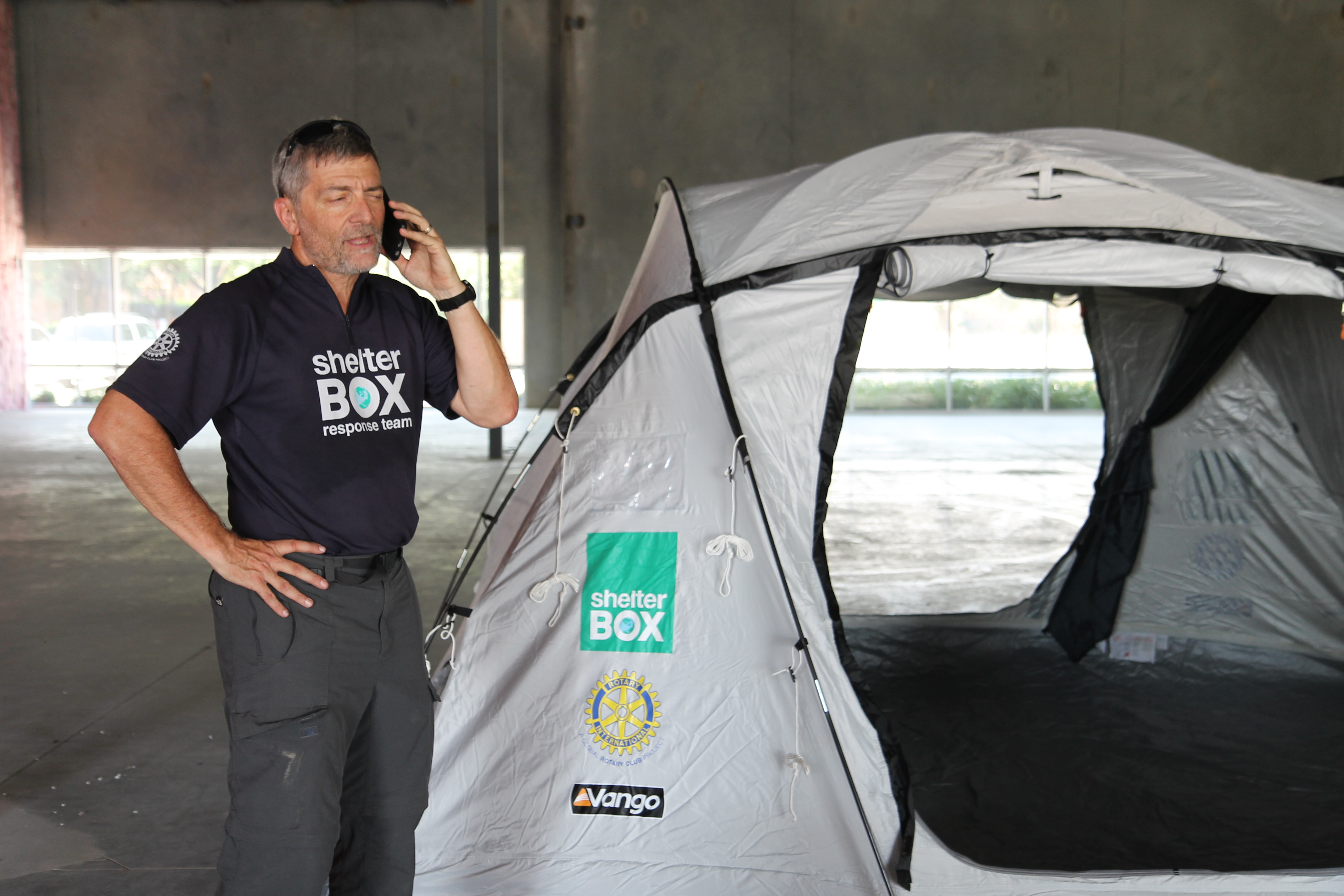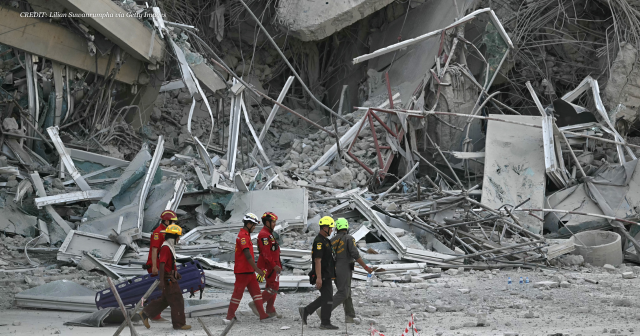
Blog
Remote training: how we’re training teams and communities during coronavirus
Coronavirus has brought about massive changes to the way we work. The training aspect of it has not been an exception.
Before coronavirus, we provided training face to face out in the field. ShelterBox response team members would train members of the affected communities or staff and volunteers of our partner agencies. These are also known as Train the Trainer sessions. During these, our trained team members would show how to use various aid items. For example, this included how best to use the tools and fixings within a shelter kit, or how to use the solar lights or the water filters. These newly trained individuals would then go out and share what they’ve learnt with the rest of the community receiving our aid.
When coronavirus started getting a hold of the whole world, our work was inadvertently affected. Because of the strict travel restrictions, we were unable to send teams out in the field to deliver aid or conduct training sessions. So how could we ensure that the communities receiving our aid were being trained on how to use them in the best possible way?
Luckily, we live in a digital age, where being connected to the rest of the world is the norm! Despite the challenges of this year, coronavirus has shown us that there’s little we can’t do remotely. We used the best digital tools at our disposal to ensure that families receiving our aid were also getting the necessary training. Often, that happened from thousands of miles away.
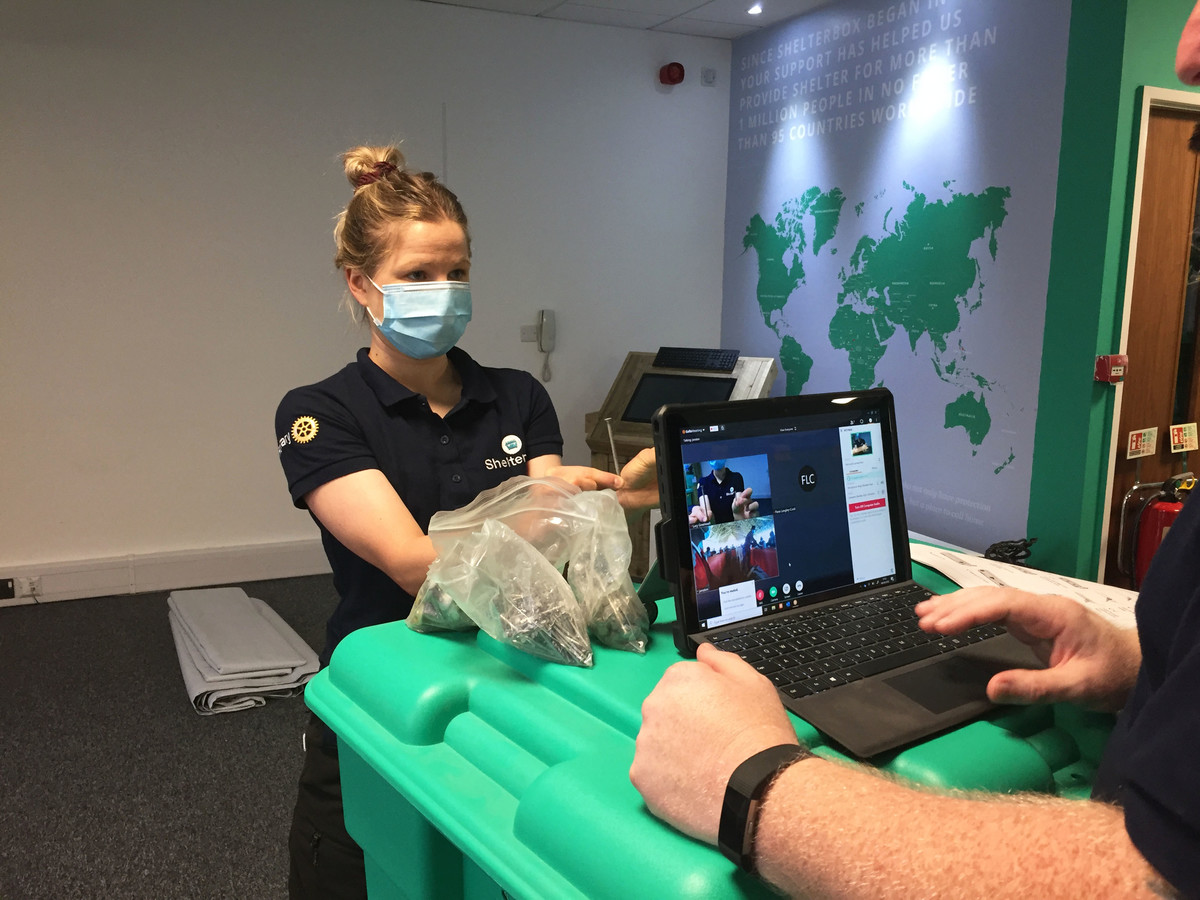
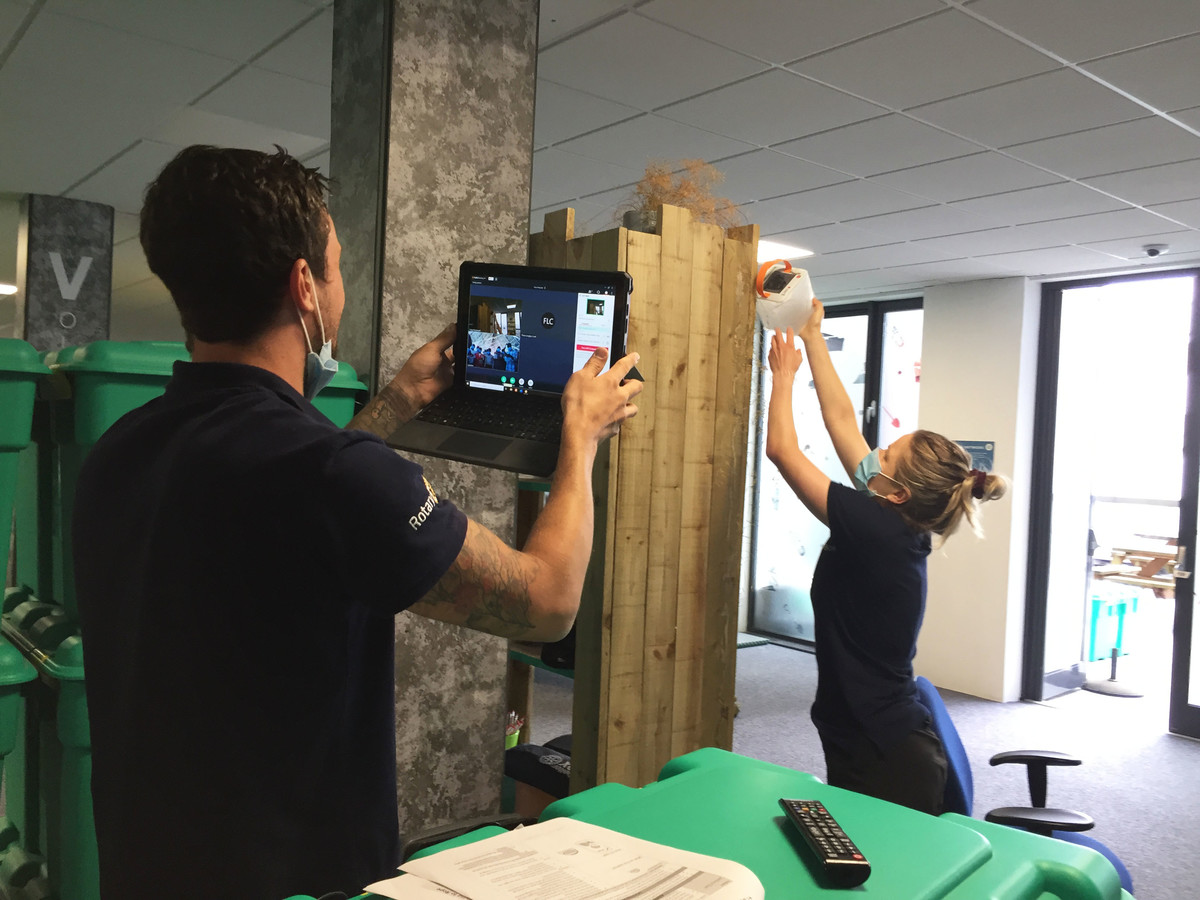
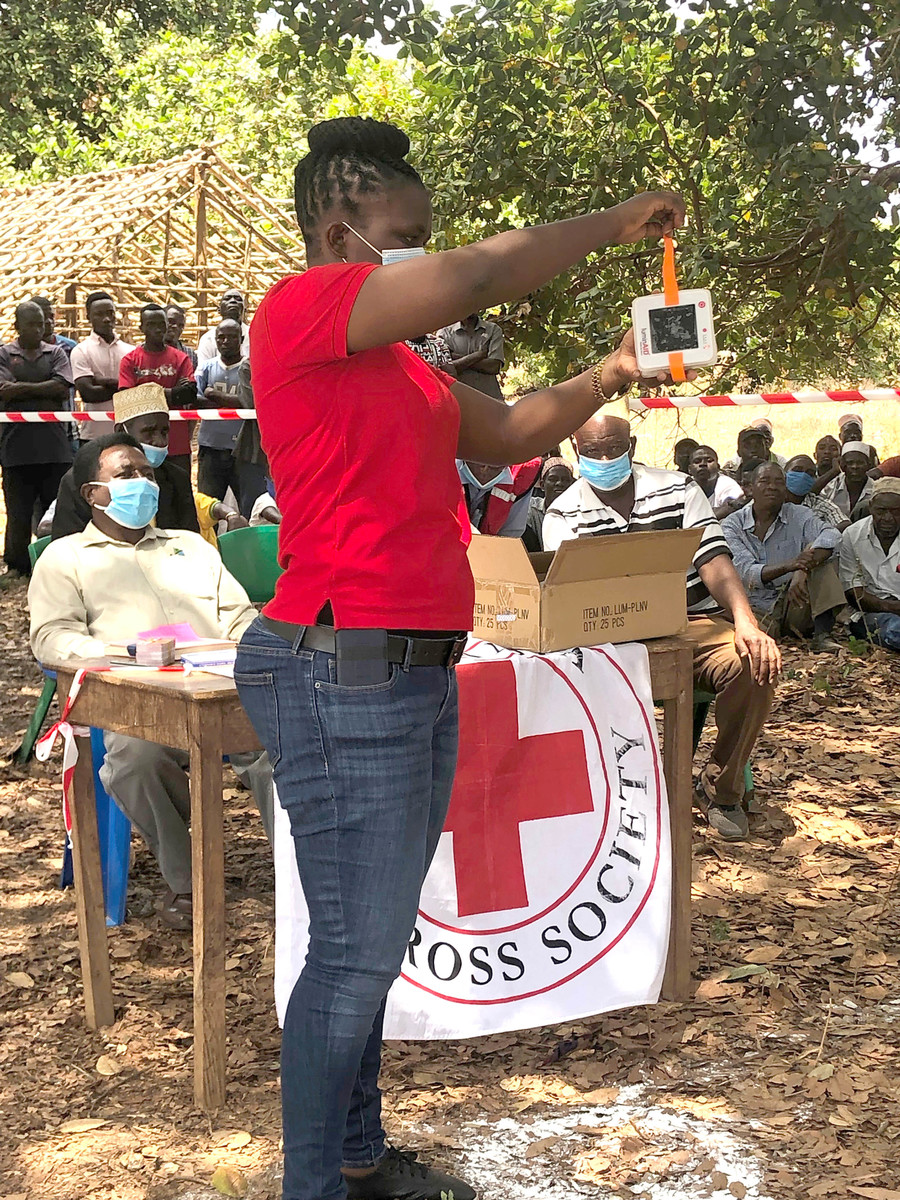
Top images: ShelterBox staff carrying out remote shelter kit and solar light training with the Tanzania Red Cross Society. Bottom image: A member of the Tanzania Red Cross Society demonstrating a solar light during aid distributions.
Conducting remote training in India and Tanzania
This was a new thing for us here at ShelterBox. Up until now, we were conducting all our deployment-related training face to face. The need to deliver training has always been crucial to the success of our operations. We knew that it was important for us to look at alternative methods of training, especially with so many responses happening this year. We realised that the best option was to explore whether we could do this remotely.
We began by determining what training package would be most appropriate. We worked together with the Operations Coordinators here at ShelterBox, and our partner representatives from the Tanzanian Red Cross and Habitat for Humanity in India.
Once we shaped the training programme, we looked at how we were going to deliver the training in practice. We considered things like the number of people required to deliver the training, the type of IT hardware equipment we’d need like laptops, cameras and TVs, the type of IT software required, such as video conferencing applications, and making sure that our internet connection was good.
We also had to identify who our audience was and whether we needed translators and the type of equipment required for demonstration purposes both on our end and in India and Tanzania. Lastly, we had to define the supporting materials such as videos or leaflets and decide on the venues to be used.
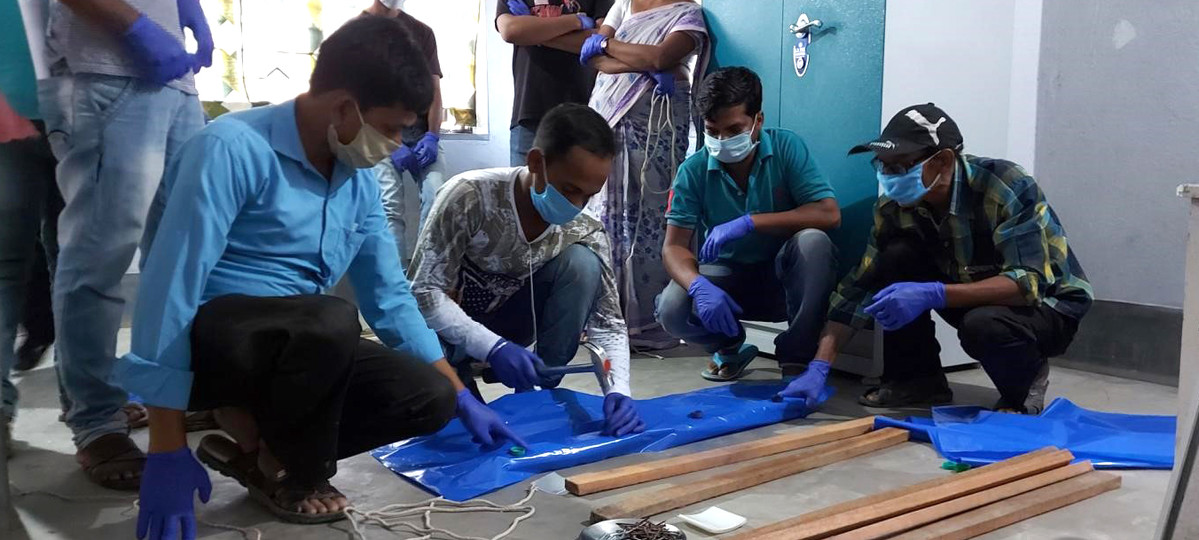
Members of Habitat for Humanity India during the remote training on shelter kits.
Once we had collected all the data, we began to design and practice the training. Finally, we scheduled the different sessions that we were delivering.
For both responses in India and Tanzania, the training lasted six hours in total, delivered over two sessions. We conducted the session for our Tanzania response over two separate days. The first day involved a mixture of PowerPoint presentations and ‘how-to’ videos on different aid items. The second day included a more practical demonstration on how to run a Train the Trainer session. The session for our India response was very similar, but we managed to run it over one day.
Running training sessions remotely isn’t completely new for us. But delivering response training in this way was completely new territory for us here at ShelterBox. We were naturally a bit nervous about it. For those of us working from home for the most part of this year, we know that technology can be a fickle friend! We knew we had to make sure that the sessions ran smoothly, and we needed tech on our side. But the main overriding challenge was the need to mitigate any risks related to coronavirus. It was extremely important for us to make sure that our partners on the other end of the call took the necessary precautions to make sure that everyone was being kept safe.
We had to ensure that our partners in India and Tanzania were following social distancing rules and wearing Personal Protective Equipment whilst carrying out training for the local communities.
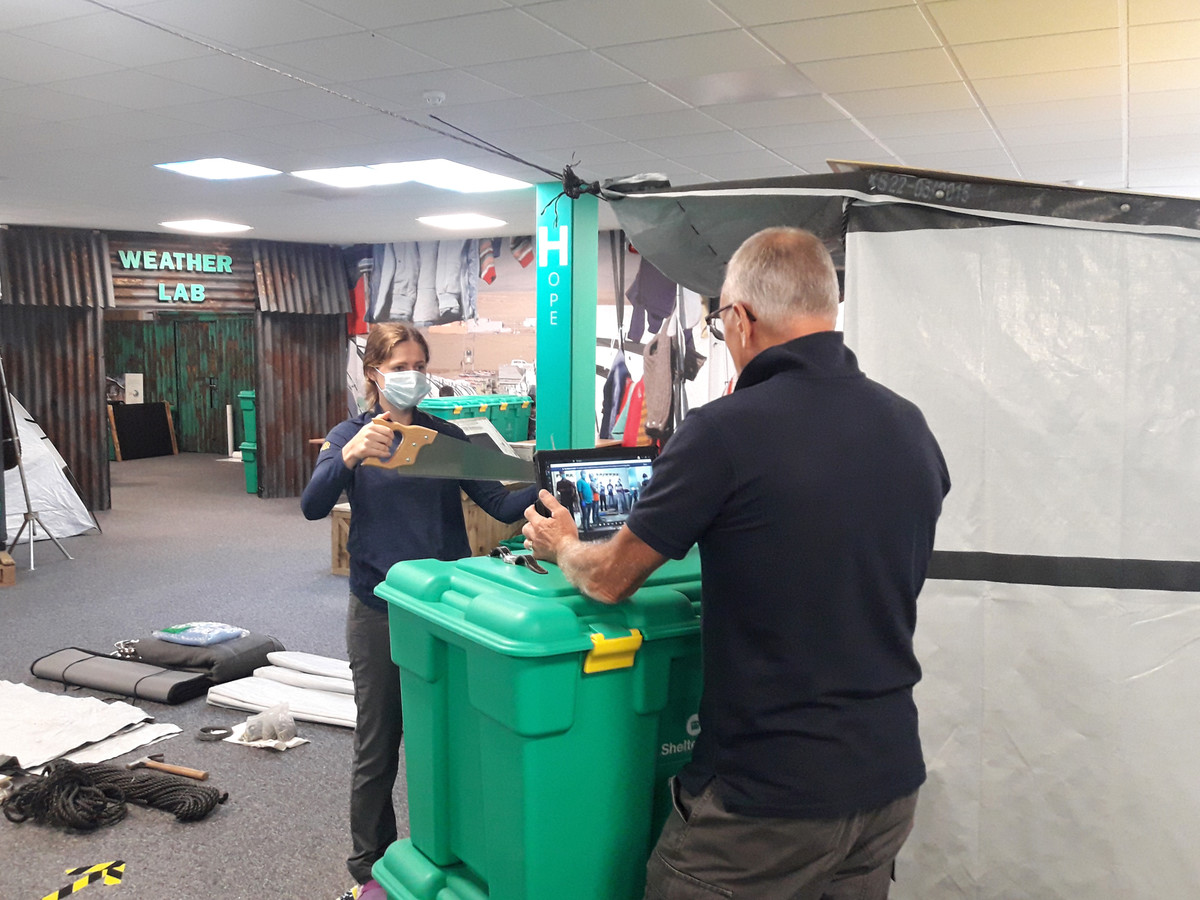
ShelterBox staff conducting remote training for the India response.
Those involved in these training sessions came back to us with positive feedback. We were glad that this training method was deemed successful, and decided that we’ll be using it again in the future!
There are both benefits and disadvantages to remote training. Providing training remotely meant that we were able to save money from not deploying teams in India and Tanzania. It’s also more environmentally friendly as there are no physical journeys involved with no use of aeroplanes, cars or boats. Yet, there is still high value in carrying out these hands-on sessions face-to-face.
It’s easier to know that we’re training the right people in the right way when we are physically in the same room with them. It also helps with ensuring that the training is fully understood.
There’s another important advantage of being present within the disaster area. It gives us the ability to make tweaks and amendments to the training programme there and then. This way we can sure that our sessions are as tailored as possible.
Coronavirus isn’t going anywhere anytime soon, and neither are we. We are lucky to have many options at our disposal to make sure that the families we’re helping receive the right support, wherever they are. It’s shown us that no matter what the challenge is, we can still rise to it. And at the end of the day, that’s exactly who we are.

